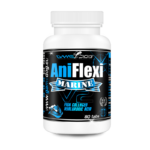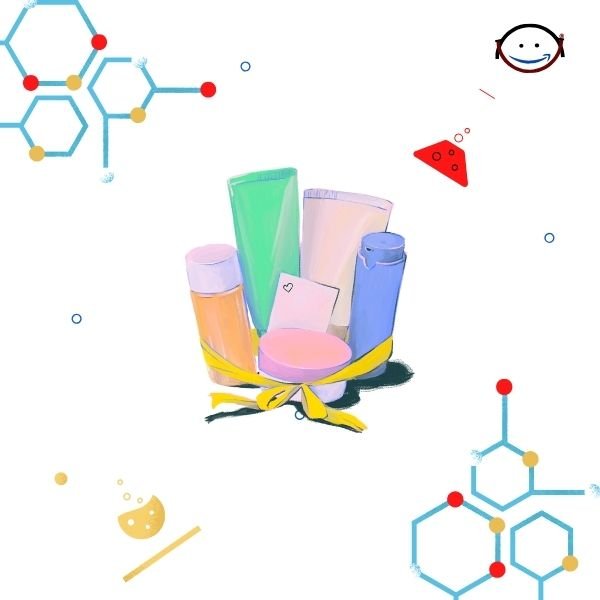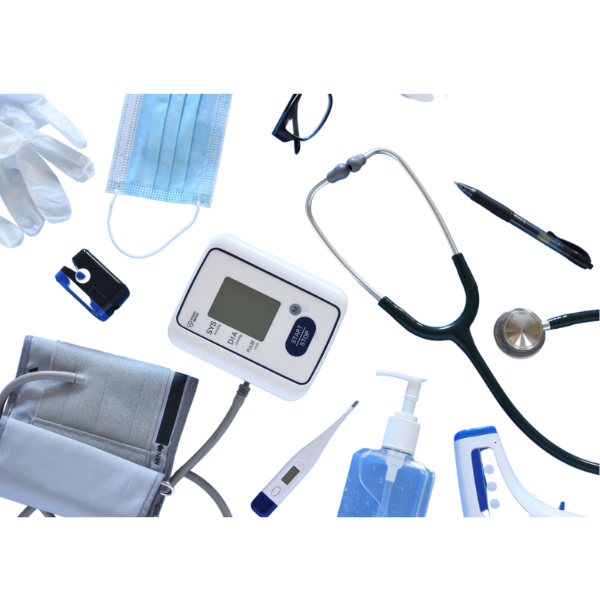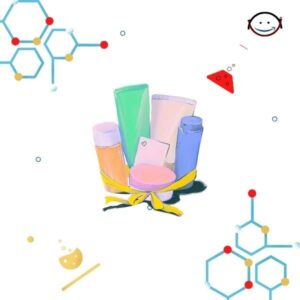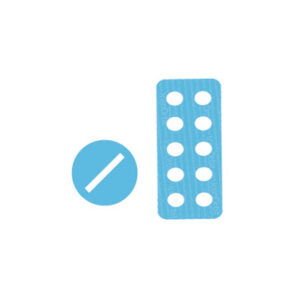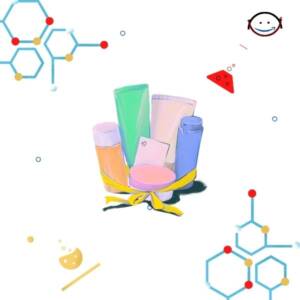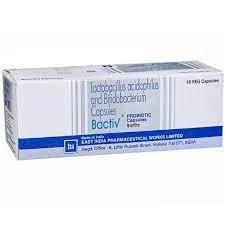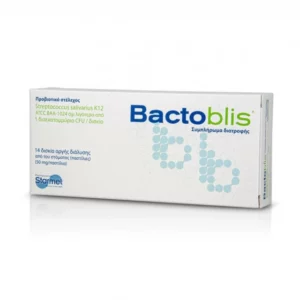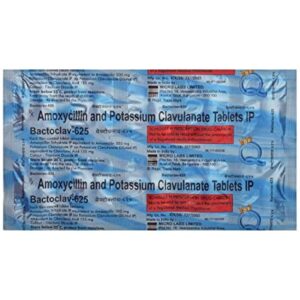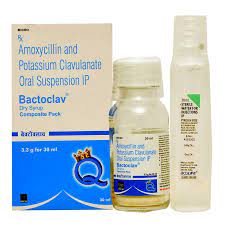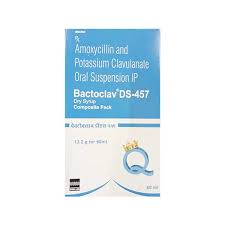-
Kin Fresh Mouthwash 500ml ₦9,000.00 QTY: 1
Customer matched zone "Lagos Delivery Options"
Sort by:
34657–34672 of 373056 Results
-
SaleBactin 3 gmBactin 3 gm is indicated for the treatment of single infection or mixed infections caused by two or more susceptible organisms. It can also be used for infections caused by organisms resistant to other antibiotics including Aminoglycosides, Penicillins and Cephalosporins.As antibacterial ... Read moreBactin 3 gm is indicated for the treatment of single infection or mixed infections caused by two or more susceptible organisms. It can also be used for infections caused by organisms resistant to other antibiotics including Aminoglycosides, Penicillins and Cephalosporins.As antibacterial concentrations of Bactin 3 gm are obtained in serum and body tissues as well as in the urine following administration by mouth, Bactin 3 gm has been suggested for use in the treatment of a wide range of infections caused by susceptible organisms including infections of the urinary, respiratory and gastrointestinal tracts, gonorrhoea and septicaemia. The extensive tissue penetration of Bactin 3 gm combined with its enhanced antibacterial activity (including antipseudomonal activity), enables Bactin 3 gm to be used alone (pending sensitivity results) or in combination with an Aminoglycoside or with beta lactam antibiotics for instance when severe neutropenia is present or with an antibiotic active against anaerobes where the presence of bacteroides fragilis is suspected. Bactin 3 gm is indicated for the treatment of the following infections caused by sensitive bacteria: Severe systemic infections: e.g. septicaemia, bacteraemia, peritionitis, infections in immunosuppressed patients with haematological or solid tumors and in patients in intensive care unit with specific problems such as infected burns. Respiratory tract infections: Lobar and bronchopneumonia, acute and chronic bronchitis, acute exacerbation of cystic fibrosis, bronchiectasis, empyema. Urinary tract infections: Uncomplicated and complicated urethritis, cystitis, pyelonephritis, prostatitis, epididymitis. Skin and soft tissue infections: e.g. infected ulcers, wound infections, abscesses, cellulitis, otitis externa, erysipelas, infected burns. Gastro-intestinal infections: e.g. enteric fever, infective diarrhea. Infection of the biliary tract: e.g. cholangitis, cholecystitis, empyema of the gall bladder. Intra abdominal infections: e.g. peritonitis, intra abdominal abscesses. Bone and joint infection: Osteomyelitis, septic arthritis. Pelvic infections: e.g. salpingitis, endometritis, pelvic inflammatory diseases. Eye, ear, nose and throat infections: e.g. otitis media, sinusitis, mastoiditis, tonsillitis. Gonorrhoea: Including urethral, rectal and pharyngeal gonorrhoea caused by beta-lactamase producing organisms or organisms moderately sensitive to penicillin. Theropeutic Class4-Quinolone preparations, Anti-diarrhoeal Antimicrobial drugsPharmacologyBactin 3 gm is a synthetic fluoroquinolone. It has bactericidal activity against a wide range of gram-positive and gram-negative organisms. It inhibits bacterial DNA synthesis by binding with the bacterial enzyme-DNA gyrase and topoisomerase IV which are responsible for DNA supercoiling.Dosage of Bactin 3 gmGeneral dosage recommendations: The dosage of the Bactin 3 gm is determined by the severity and type of infection, the sensitivity of the causative organism(s) and the age, weight and renal function of the patient.Adults: The dosage range for adults is 100-750 mg twice daily. In infections of the lower and upper urinary tract (depending on severity): 250-500 mg twice daily.In respiratory tract infections: 250-500mg twice daily for both upper and lower respiratory tract infections, depending on the severity. For the treatment of known Streptococcus pneumonia infection, the recommended dosage is 750 mg twice daily.In gonorrhea: A single dose of 250 or 500 mg.In the majority other infections: 500-750 mg twice daily should be administered.Cystic fibrosis: In adults with pseudomonal infections of the lower respiratory tract , the normal dose is 750 mg twice daily. As the pharmacokinetics of Bactin 3 gm remain unchanged in patients with cystic fibrosis, the low body weight of these patients would be fallen into consideration when determining dosage.Impaired renal function: Dosage adjustment is not usually required except in patients with several renal impairment. (serum creatinine >265 micro mol/l or creatinine clearance <20 ml/minute). If adjustment is necessary, this may be achieved by reducing the total daily dose by half, although monitoring of drug serum levels provide the most reliable basis for dose adjustment.Elderly: Although higher Bactin 3 gm serum levels are found in the elderly, no adjustment of dosage is necessary.Adeloscents and children: As with other drugs in its class, Bactin 3 gm has been shown to cause arthropathy in weight bearing joints of immature animals. Although the relevance of this to man is unknown, its use in children, growing children and growing adolescents is not recommended. However, where the benefit of using Bactin 3 gm is considered to outweigh the potential risk, the dosage should be 7.5-15 mg/kg/day depending upon the severity of infection, administered in two divided doses.Duration of treatment: The duration of treatment depends upon the severity of infection, clinical response and bacteriological findings.For acute infections: The usual treatment period is 5 to 10 days with Bactin 3 gm tablets. Generally treatment should be continued for three days after the signs and symptoms of the infection have disappeared.Extended-release tablet: In uncomplicated urinary tract infection (acute cystitis), the recommended dose of extended-release tablet is 1000 mg tablet once daily for three days. For IV infusion: Urinary Tract Infection: Mild to Moderate: 200 mg 12 hourly for 7-14 days; Severe or Complicated: 400 mg 12 hourly for 7-14 days Lower Respiratory Tract infection: Mild to Moderate: 400 mg 12 hourly for 7-14 days; Severe or Complicated: 400 mg 8 hourly for 7-14 days Nosocomial Pneumonia: Mild/Moderate/Severe: 400 mg 8 hourly for 10-14 days Skin and Skin Structure: Mild to Moderate: 400 mg 12 hourly for 7-14 days; Severe or Complicated: 400 mg 8 hourly for 7-14 days Bone and Joint Infection: Mild to Moderate: 400 mg 12 hourly for more than 4-6 weeks; Severe/Complicated: 400 mg 8 hourly for more than 4-6weeks Intraabdominal (Acute abdomen): Complicated: 400 mg 12 hourly for 7-14 days Acute Sinusitis: Mild/Moderate: 400 mg 12 hourly for 10 days Chronic Bacterial Prostatitis: Mild/Moderate: 400 mg 12 hourly for 28 Days. Administration of Bactin 3 gmInstruction for the use of Bactin 3 gm IV infusion- Check the bag for minute leaks by squeezing the inner bag firmly. If leaks are found, or if seal is not intact, discard the solution. Do not use if the solution is cloudy or a precipitate is present. Do not use flexible bags in series connections. Close flow control clamp of administration set. Remove cover from port at bottom of bag. Insert piercing pin of administration set into port with a twisting motion until the pin is firmly seated. Suspend bag from hanger. Squeeze and release drip chamber to establish proper fluid level in chamber during infusion of Bactin 3 gm IV infusion. Open flow control clamp to expel air from set.Close clamp. Regulate rate of administration with flow control clamp. Interaction of Bactin 3 gmConcurrent administration of Bactin 3 gm should be avoided with Magnesium or Aluminum containing antacids or sucralfate or with other products containing Calcium, Iron or Zinc. These products may be taken two hours after or six hours before Bactin 3 gm. Bactin 3 gm should not be taken concurrently with milk or other dairy products, since absorption of Bactin 3 gm may be significantly reduced. Dietary calcium is a part of a meal, however, does not significantly affect the absorption of Bactin 3 gm.ContraindicationsPatients with a history of hypersensitivity to Bactin 3 gm or to other quinolones.Side Effects of Bactin 3 gmGastrointestinal disturbances e.g. nausea, diarrhoea, vomiting, dyspepsia, abdominal pain. Disturbances of the central nervous system e.g. headache, dizziness, tiredness, confusion, convulsion & risk of retinal detachment. Hypersensitivity reactions e.g. skin rash (very rarely Stevens-Johnson syndrome and toxic epidermal necrolysis), pruritus and possible systemic reactions. The other less reported reactions are joint pain, mild photosensitivity and transient increase in liver enzymes (particularly in patients with previous liver damage), serum bilirubin, urea or creatinine levels. Risk of hypoglycemia & mental health adverse effects.Pregnancy & LactationThere are no adequate and well-controlled studies in pregnant women. Bactin 3 gm should be used during pregnancy only if the potential benefit justifies the potential risk to the fetus and mother. Bactin 3 gm is excreted in human milk. Due to the potential risk of articular damage, Bactin 3 gm should not be used during lactation.Precautions & WarningsIt should be used with caution in patients with suspected or known CNS disorders such as arteriosclerosis or epilepsy or other factors which predispose to seizures and convulsion. Bactin 3 gm may be taken with or without meals and to drink fluids liberally. Concurrent administration of Bactin 3 gm should be avoided with magnesium / aluminium antacids, or sucralfate or with other products containing calcium, iron and zinc. These products may be taken two hours after or six hours before Bactin 3 gm. Bactin 3 gm should not be taken concurrently with milk or yogurt alone, since absorption of Bactin 3 gm may be significantly reduced. Dietary calcium is a part of a meal, however, does not significantly affect the Bactin 3 gm absorption. Overdose Effects of Bactin 3 gmOverdose following Bactin 3 gm administration may lead to seizures, hallucinations, confusion, abdominal discomfort, renal and hepatic impairment as well as crystalluria, haematuria, & reversible renal toxicity.Storage ConditionsKeep below 30?C temperature, protected from light & moisture. Keep out of the reach of children.Use In Special PopulationsAlthough effective in clinical trials, Bactin 3 gm is not a drug of first choice in pediatric population.Drug Classes4-Quinolone preparations, Anti-diarrhoeal Antimicrobial drugsMode Of ActionBactin 3 gm is a synthetic quinolone anti-infective agent. Ciprofloxacion has broad spectrum of activity. It is active against most gram negative aerobic bacteria including Enterobacteriaceae and Pseudomonas aeruginosa. Bactin 3 gm is also active against gram-positive aerobic bacteria including penicillinase producing, non penicillinase producing, and methicillin resistant staphylococci, although many strains of streptococci are relatively resistant to the drug. The bactericidal action of Bactin 3 gm results from interference with the enzyme DNA gyrase needed for the synthesis of bacterial DNA. Following oral administration it is rapidly and well absorbed from the G.I. tract. It is widely distributed into the body tissues and fluids. The half life is about 3.5 hours. About 30% to 50% of an oral dose of Bactin 3 gm is excreted in the urine within 24 hours as unchanged drug and biologically active metabolites.PregnancyReproduction studies performed in mice, rats and rabbits using parenteral and oral administration did not reveal any evidence of teratogenicity, impairment of fertility or impairment of peri/post natal development. However as with other quinolones, Bactin 3 gm has been shown to cause arthropathy in immature animals and therefore its use during pregnancy is not recommended. Studies in rats have indicated that Bactin 3 gm is secreted in milk, administration to nursing mothers is thus not recommended.Pediatric UsesAlthough effective in clinical trials, Bactin 3 gm is not a drug of first choice in pediatric population.Sku: 1736105461-3857
Bactin3 gm
₦1,925.00Original price was: ₦1,925.00.₦1,732.50Current price is: ₦1,732.50.₦1,925.00Original price was: ₦1,925.00.₦1,732.50Current price is: ₦1,732.50. Add to basket Quick View -
-
-
-
With 0.5% Chlorhexidine & 70% AlcoholSku: 1715121631-32
BACTISHIELD Handrub with 0.5% Chlorhexidine & 70% Alcohol (5 Litres)
₦100.00 -
-
Hospital grade disinfectantSku: 1715121937-57
BACTISHIELD Handwash with 4% Chlorhexidine (5 Litres)
₦100.00 -
-
SaleSku: 1737079270-2042
BACTIV 10S CAP
₦4,000.00Original price was: ₦4,000.00.₦3,300.00Current price is: ₦3,300.00.₦4,000.00Original price was: ₦4,000.00.₦3,300.00Current price is: ₦3,300.00. Add to basket Quick View -
Bactizith Capsules SpecificationRequires Prescription (YES/NO)YesGenericsAzithromycinUsed ForBacterial InfectionHow it worksThe mechanism of action of azithromycin is based on the suppression of bacterial protein synthesis, that is to say that it binds to the ribosomal 50s sub-unit and inhibits the translocation of peptides. Azithromycin acts bacteriostatic.Bactizith Capsules Usage And SafetyDosageAzithromycinSide EffectsSudden wheeziness, difficulty in breathing, swelling of eyelids, face or lips, rash or itching (especially affecting the whole body) , severe or prolonged diarrhoea, which may have blood or mucus in it, during or after treatment with Zithromax as this may be a sign of serious bowel inflammation , severe skin rash causing redness and flaking , rapid or irregular heartbeat , low blood pressure , Serious skin reactions: blistering of the skin, mouth, eyes and genitals (Stevens-Johnson Syndrome (SJS)) , blistering of the skin, severe skin reaction.Drug InteractionsErgot or ergotamine , Warfarin , Ciclosporin , Antacids , Digoxin , Colchicine (used for gout and familial Mediterranean fever) , Terfenadine .IndicationIt is used to treat infections caused by certain bacteria and other micro-organisms.When not to UseDo not take Azithromycin: If you are allergic to azithromycin or any other macrolide antibiotic such as erythromycin or clarithromycin or any of the ingredients of this medicine . An allergic reaction may cause skin rash or wheezing.Bactizith Capsules PrecautionsPrecautionTell your doctor immediately if you feel your heart beating in your chest or have an abnormal heartbeat, or get dizzy or faint or suffer from any muscle weakness when taking Azithromycin.Bactizith Capsules WarningsWarning 1If you develop diarrhoea or loose stools during or after treatment, tell your doctor at once. Do not take any medicine to treat your diarrhoea without first checking with your doctor. If your diarrhoea continues, please inform your doctor.Warning 2You should take Azithromycin either 1 hour before a meal or 2 hours after a meal.Warning 3Azithromycin medicine contain lactose, a type of sugar. If you have been told by your doctor that you have an intolerance to some sugars contact your doctor before taking this medicine.Bactizith Capsules Additional InformationPregnancy categoryAlways consult your physician before using any medicine.Storage (YES/NO)Store this medicine at room temperature, away from direct light and heat.Sku: 1716668264-431
Bactizith Capsules 500Mg (1 Box = 1 Strip)(1 Strip = 3 Capsules)
₦20,898.00 -
-
SaleSku: 1737079343-2057
BACTOCLAV 625MG TAB 10`S
₦5,042.50Original price was: ₦5,042.50.₦4,155.00Current price is: ₦4,155.00.₦5,042.50Original price was: ₦5,042.50.₦4,155.00Current price is: ₦4,155.00. Add to basket Quick View -
SaleAmoxycillin 200 MG+Clavulanic acid 28.5 MG /5MLSku: 1737079339-2056
BACTOCLAV DRY SUSPENSION 30ML
₦1,510.00Original price was: ₦1,510.00.₦1,245.75Current price is: ₦1,245.75.₦1,510.00Original price was: ₦1,510.00.₦1,245.75Current price is: ₦1,245.75. Add to basket Quick View -
SaleAmoxycillin 400 MG+Clavulanic acid 57 MG /5MLSku: 1737079333-2055
BACTOCLAV DS 457MG 60ML DRY SYP
₦6,350.00Original price was: ₦6,350.00.₦5,238.75Current price is: ₦5,238.75.₦6,350.00Original price was: ₦6,350.00.₦5,238.75Current price is: ₦5,238.75. Add to basket Quick View -
-
SaleBactoderm 15 gmBactoderm 15 gm ointment is indicated for the topical treatment of impetigo (skin diseases) due to Staphylococcus aureus and Streptococcus pyogenes. It is also indicated in folliculitis, furunculosis.Theropeutic ClassTopical Antibiotic preparationsPharmacologyBactoderm 15 gm is a naturally occurring antibiotic. This antibacterial agent is produced by fermentation using the organism Pseudomonas fluorescens. It is active against a wide range of bacteria (e.g. Staphylococcus aureus including methicillin-resistant strains and Streptococcus pyogenes) those responsible for the majority of skin infections. It is also active against gram-negative pathogens, such as Escherichia coli and Haemophilus influenzae. Bactoderm 15 gm inhibits bacterial protein synthesis by reversibly and specifically binding to bacterial isoleucyl transfer-RNA synthetase.Dosage & Administration of Bactoderm 15 gmA small amount of Bactropen ointment should be applied to the affected area 3 times daily for up to 10 days. The safety and effectiveness of Bactoderm 15 gm ointment have been established in the age range of 2 months to 16 years.Dosage of Bactoderm 15 gmA small amount of Bactropen ointment should be applied to the affected area 3 times daily for up to 10 days. The safety and effectiveness of Bactoderm 15 gm ointment have been established in the age range of 2 months to 16 years.Interaction of Bactoderm 15 gmNo drug interaction has been identified with Bactoderm 15 gm ointment.ContraindicationsThe drug is contraindicated in individuals with a history of hypersensitivity reactions to Bactoderm 15 gm or any of the components of the preparation.Side Effects of Bactoderm 15 gmReported side effects are burning, stinging or pain, itching and some patient may be suffered rash, nausea, erythema, dry skin, tenderness, swelling, contact dermatitis and increased exudate.Pregnancy & LactationReproduction studies on Bactoderm 15 gm ointment in animals have revealed no evidence of harm to the foetus. As there is no clinical experience on it?s use during pregnancy, Bactoderm 15 gm ointment should only be used in pregnancy when the potential benefits outweigh the possible risks of treatment.It is unknown whether this drug is excreted in human milk. Because many drugs are excreted in human milk, caution should be exercised when Bactoderm 15 gm ointment is administered to a nursing woman.Precautions & WarningsBactoderm 15 gm ointment is not for ophthalmic or intra-nasal use. As with other antibacterial products, prolonged use may result in overgrowth of non-susceptible organisms, including fungi. When Bactoderm 15 gm is used on the face care should be taken to avoid the eyes. This is not suitable in conjunction with cannulae and at the site of central venous cannulation. In the event of a sensitization or severe local irritation from Bactoderm 15 gm ointment, usage should be discontinued and appropriate alternative therapy for the infection instituted. Mixing of Bactoderm 15 gm ointment with other preparations causes risk of dilution, resulting in a reduction of the antibacterial activity and potential loss of stability of the Bactoderm 15 gm in the ointment.Overdose Effects of Bactoderm 15 gmThere is currently limited data with overdose of Bactoderm 15 gm ointment. In the event of overdose, the patient should be treated supportively with appropriate monitoring as necessary.Storage ConditionsKeep below 25? C temperature, protected from light and moisture. Do not keep in freeze. Keep out of the reach of children.Drug ClassesTopical Antibiotic preparationsMode Of ActionBactoderm 15 gm is a naturally occurring antibiotic. This antibacterial agent is produced by fermentation using the organism Pseudomonas fluorescens. It is active against a wide range of bacteria (e.g. Staphylococcus aureus including methicillin-resistant strains and Streptococcus pyogenes) those responsible for the majority of skin infections. It is also active against gram-negative pathogens, such as Escherichia coli and Haemophilus influenzae. Bactoderm 15 gm inhibits bacterial protein synthesis by reversibly and specifically binding to bacterial isoleucyl transfer-RNA synthetase.PregnancyReproduction studies on Bactoderm 15 gm ointment in animals have revealed no evidence of harm to the foetus. As there is no clinical experience on it?s use during pregnancy, Bactoderm 15 gm ointment should only be used in pregnancy when the potential benefits outweigh the possible risks of treatment.It is unknown whether this drug is excreted in human milk. Because many drugs are excreted in human milk, caution should be exercised when Bactoderm 15 gm ointment is administered to a nursing woman.Sku: 1736099412-2081
Bactoderm15 gm
₦9,900.00Original price was: ₦9,900.00.₦8,910.00Current price is: ₦8,910.00.₦9,900.00Original price was: ₦9,900.00.₦8,910.00Current price is: ₦8,910.00. Add to basket Quick View
